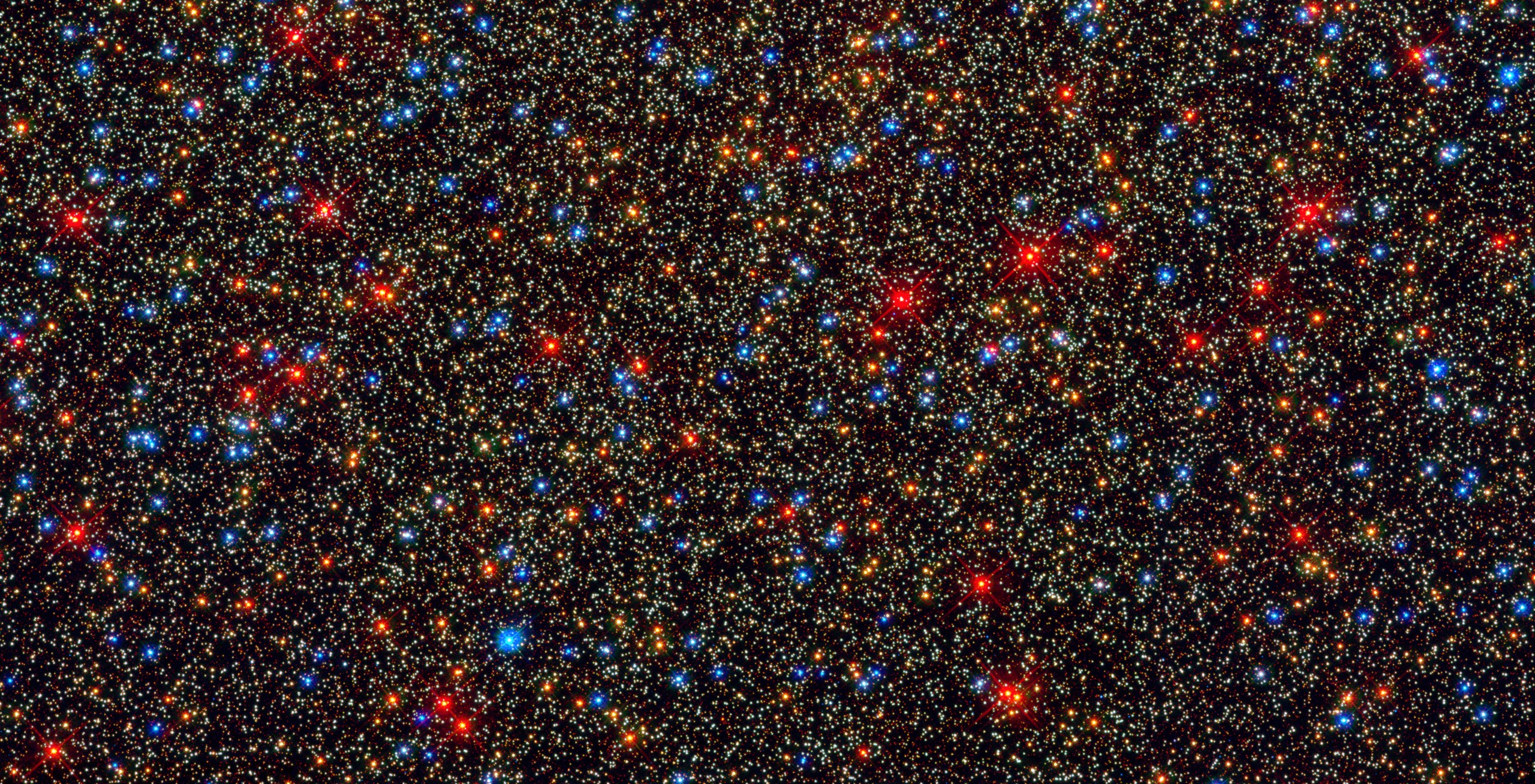
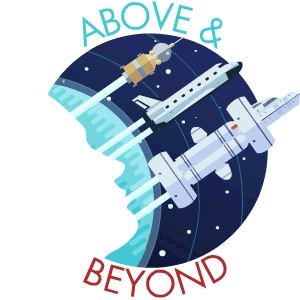
On April 24, 1990, the Space Shuttle Discovery carried a long-awaited payload into orbit. The Hubble Space Telescope is one of our best-known artificial satellites and for 25 years has been tirelessly beaming incredible images of the cosmos back to the surface of the Earth. To commemorate its 25th birthday, we’ve compiled 25 of our favorites.

1. This picture shows a dying Sun-like star ejecting vast amounts of matter at high speeds. The red color is the glow of hydrogen molecules as they collide between this fast-moving material and the slower outer shells of the star:
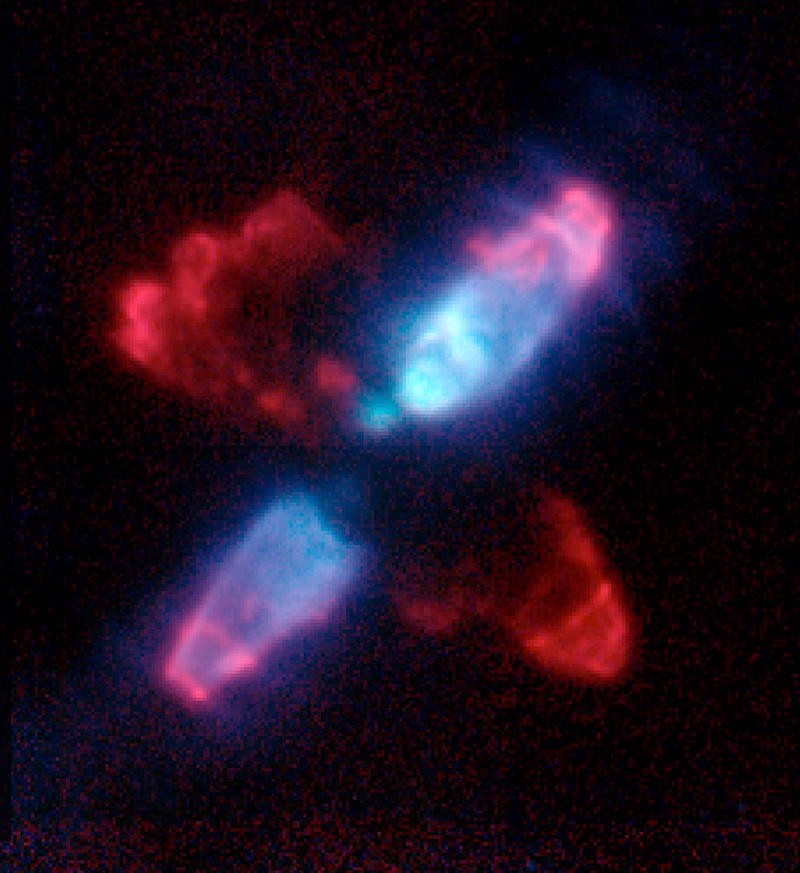

2. A close-up of a disk of dust thought to be the remnant of a smaller spiral galaxy that merged with a larger elliptical one. The shock of the collision compressed interstellar gas, precipitating a flurry of star formation and giving the material a fleecy pattern:
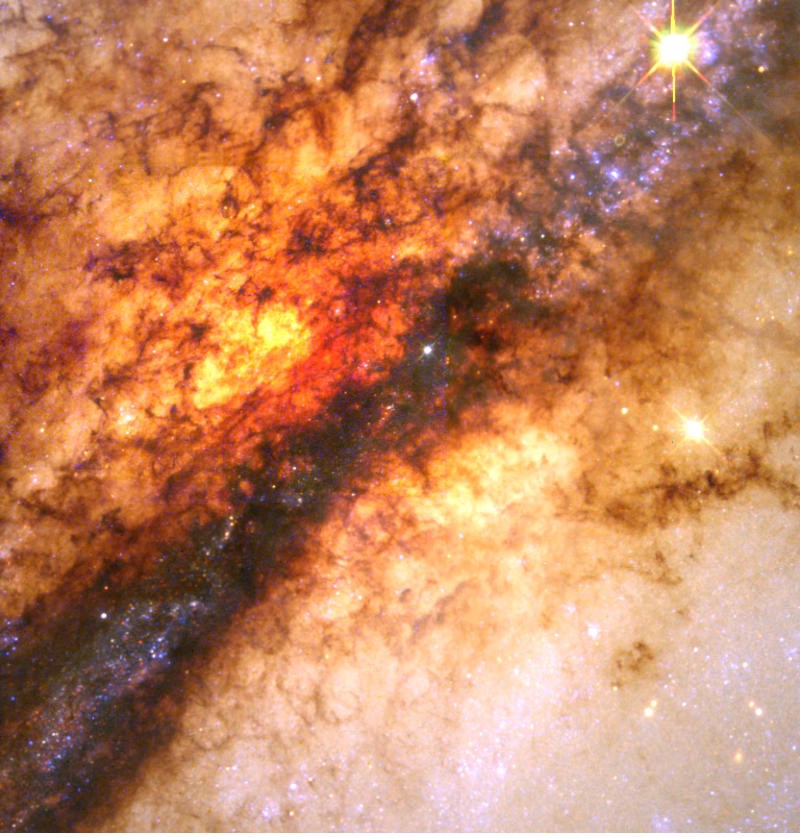

3. In January of 2002, a dull star in an obscure constellation suddenly became 600,000 times more luminous than our Sun, temporarily making it the brightest star in the Milky Way Galaxy. The mysterious star, called V838 Monocerotis, has long since faded back into obscurity. The reason for the eruption is still not fully understood:
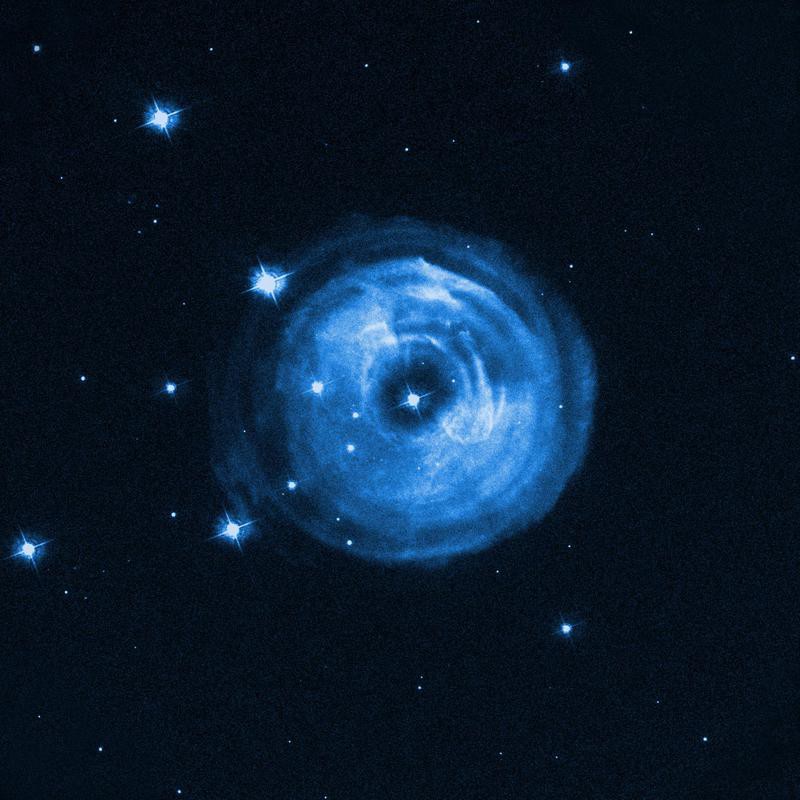

4. Here is a look down a tunnel of glowing gases over 621,000 miles long. The fluorescing tube is pointed nearly directly at Earth, so it looks more like a bubble than a cylinder. Thousands of comet-like filaments embedded along the inner rim of the nebula point back toward the central star, which is a small but super-hot white dwarf:


5. It wouldn’t be fair to assemble Hubble’s greatest hits without the iconic Pillars of Creation. These towers of gas and dust are part of the Eagle Nebula and spawn new stars, while simultaneously being eroded by nearby stars already formed. They were destroyed about 6,000 years ago by a supernova, but since they’re 7,000 light years away, we won’t see their destruction for another millennium:
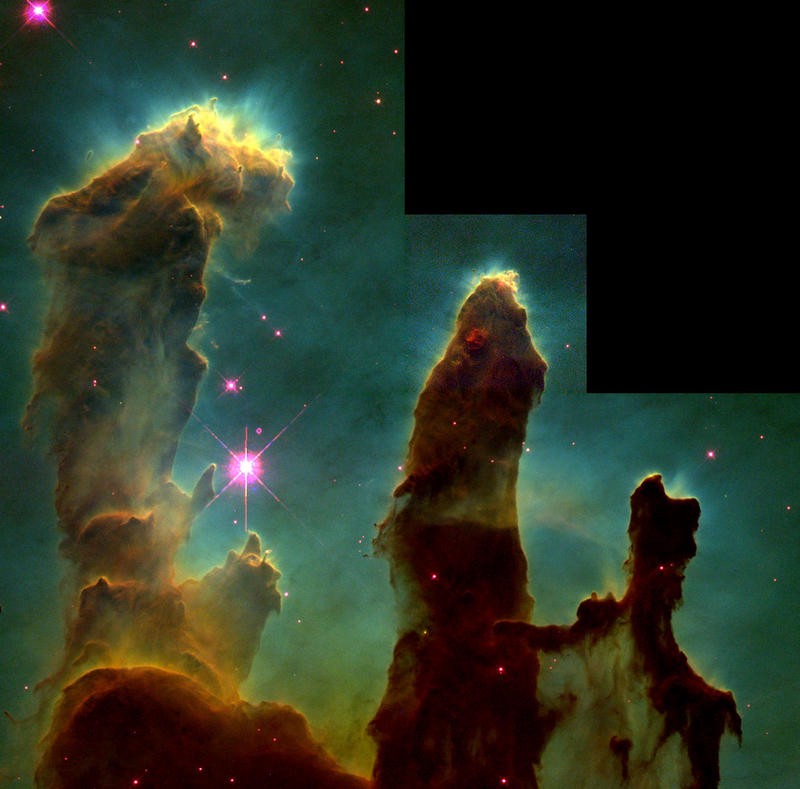

6. This image shows a sea of glowing hydrogen gas dotted with small amounts of oxygen and sulfur. The gas cloud is a hotbed of star formation, located about 5,500 light years away in the constellation of Sagittarius:
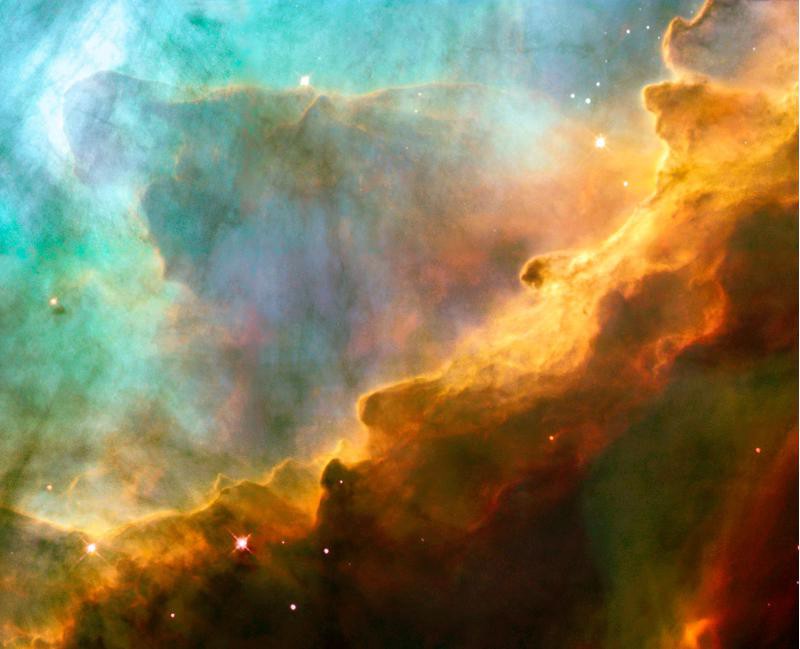

7. This photo was taken just 11 hours before Mars was the closest it’s been to Earth in 60,000 years. You can clearly see many of its surface features: the southern ice cap, the circular Huygens crater just right of center, and the Hellas impact basin–a large circular light feature in the lower right:


8. The southern hemisphere of Saturn and the underside of its rings. The angle of Saturn to Earth changes with the planet’s seasons over the course of its 29.5-year orbit. Here, you can see it at its maximum tilt of 27 degrees:
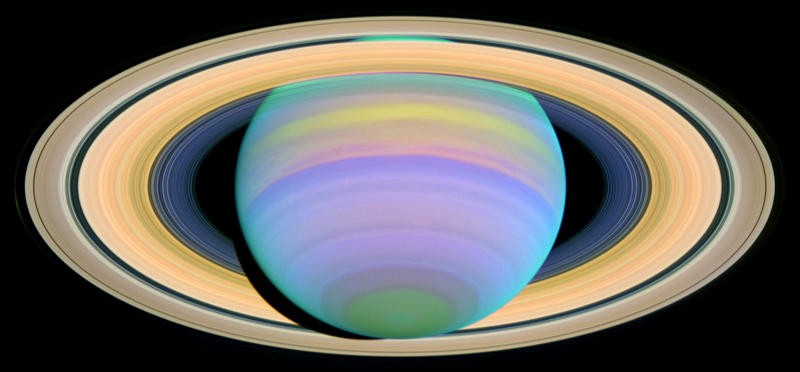

9. Tempel 1’s icy nucleus, roughly half the size of Manhattan, is dynamic and volatile. Here, it’s pictured just before a crack in the nucleus emitted a dramatic outburst of dust and gas:
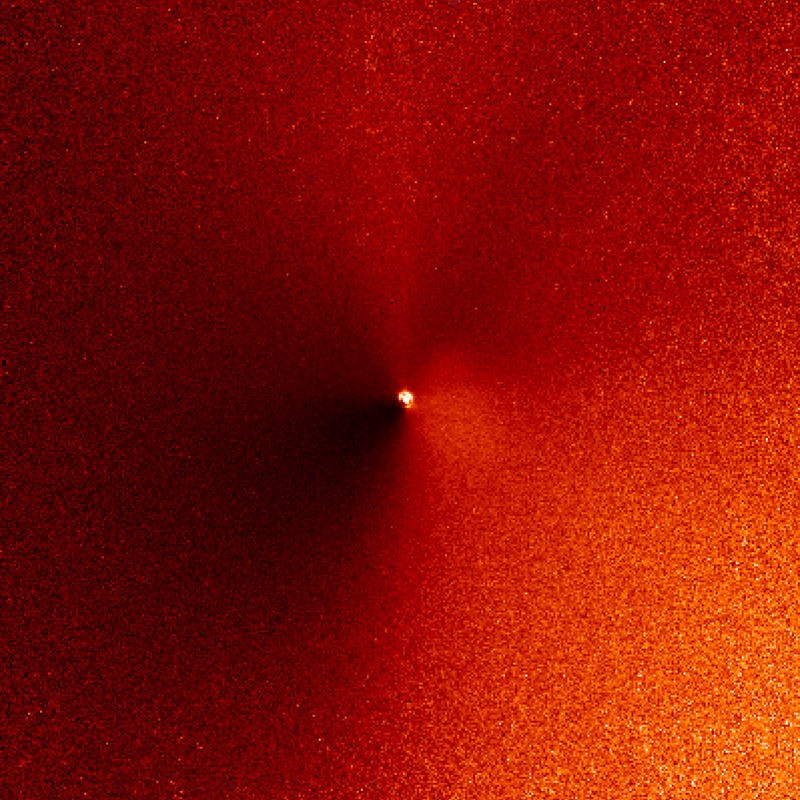

10. This stunning shot shows the galaxy NC5866 on its side. Face-on it would appear like a disk, but we see it edge-on from our perspective. NGC 5866 lies in the northern constellation Draco, at a distance of 44 million light years. It’s smaller but has about the same mass as the Milky Way:
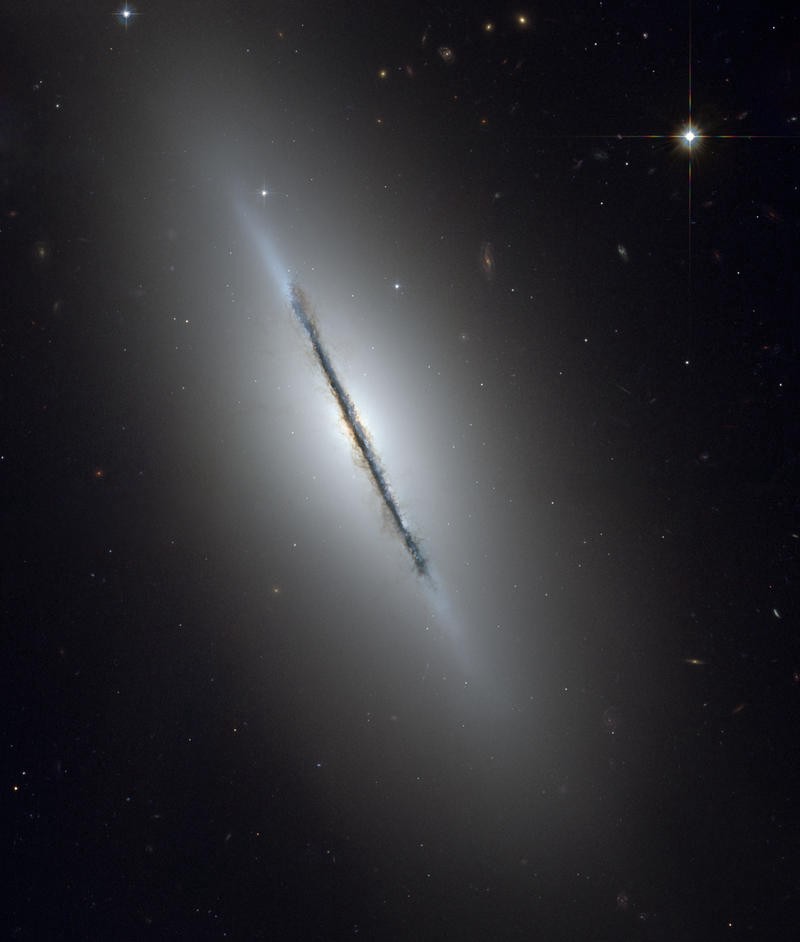

11. In 1987, astronomers witnessed one of the brightest stellar explosions in more than 400 years. The titanic supernova, called SN 1987A, blazed with the power of 100 million suns for several months following its discovery on February 23. It will continue to burn for another decade:
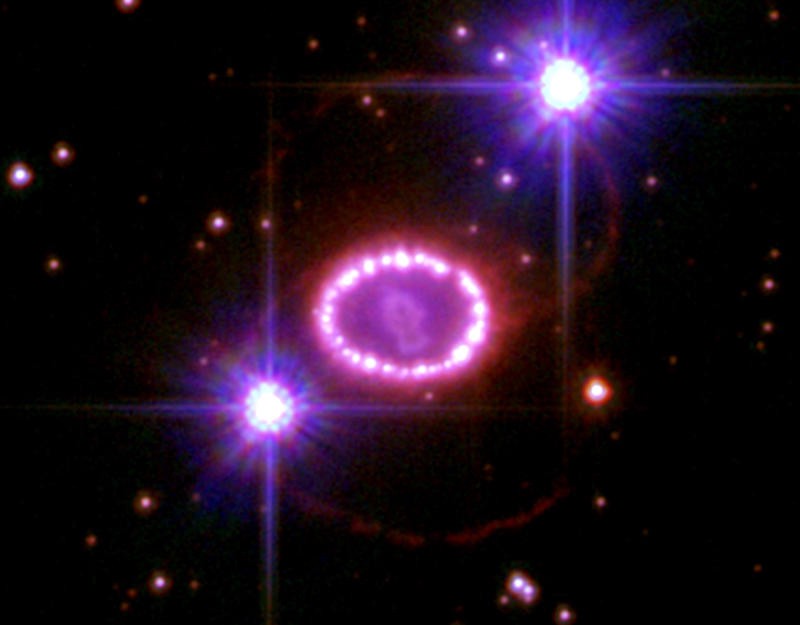

12. This image shows two galaxies dancing around each other as they begin to merge. On the right is NGC3808, and on the left is NGC 3808A. Stars, dust, and gas can be seen flowing between the two, distorted by their gravitational influence. These galaxies exist in the constellation Leo, about 300 million light years from Earth:
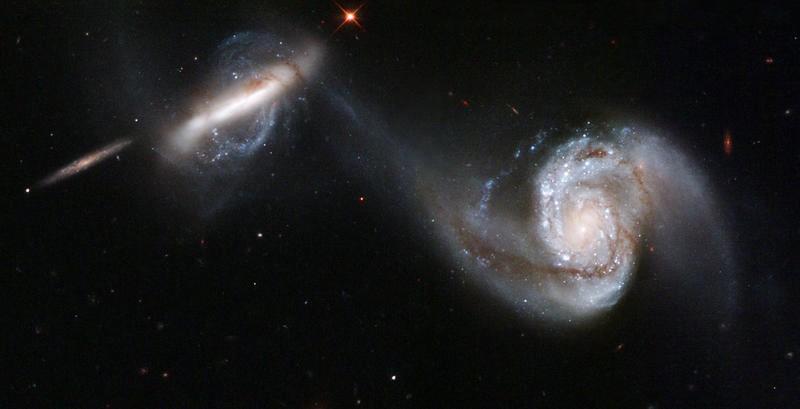

13. Jupiter’s Great Red Spot is well known, but it’s just one of many vast storms that tear through the planet’s atmosphere. Here, you can see the turbulent pattern generated by the two plumes, highlighted in the embedded infrared image:
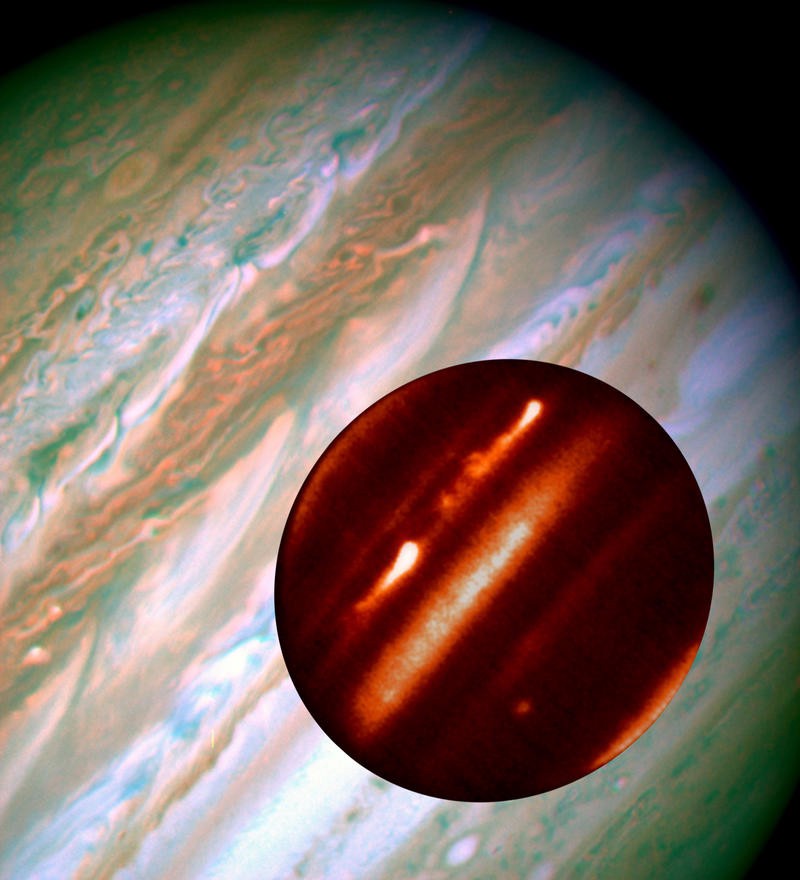

14. Globular star clusters, dense bunches of hundreds of thousands of stars, have some of the oldest surviving stars in the universe. Astronomers used NASA’s Hubble Space Telescope to identify over 11,000 globular clusters in the Virgo cluster of galaxies. Most are older than 5 billion years:
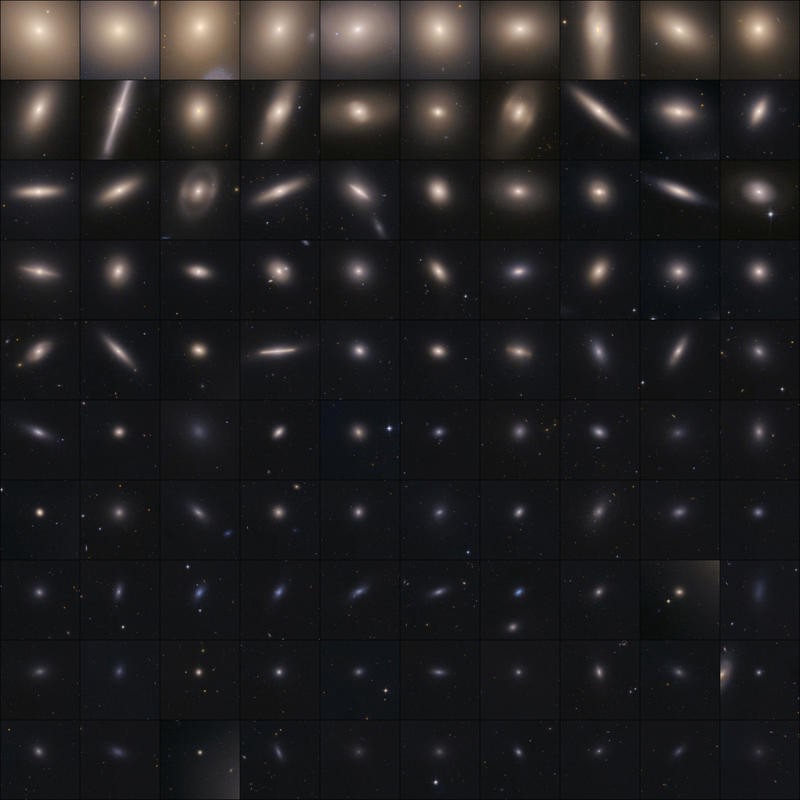

15. Four hundred years after Galileo first turned his telescope to the heavens, NASA released a selection of images from the center of our galaxy. This shot in near-infrared is from Hubble, with the true center marked by a bright patch in the lower right. Along the left side are large arcs of warm gas that have been heated by clusters of bright, massive stars:
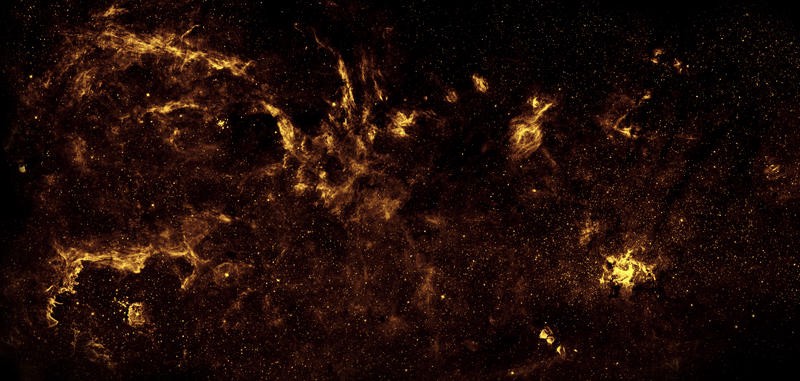

16. This image reveals a small region inside the massive globular cluster Omega Centauri, which boasts nearly 10 million stars. Globular clusters, ancient swarms of stars united by gravity, are the homesteaders of our Milky Way Galaxy. The stars in Omega Centauri are between 10 billion and 12 billion years old. The cluster lies about 16,000 light years from Earth:
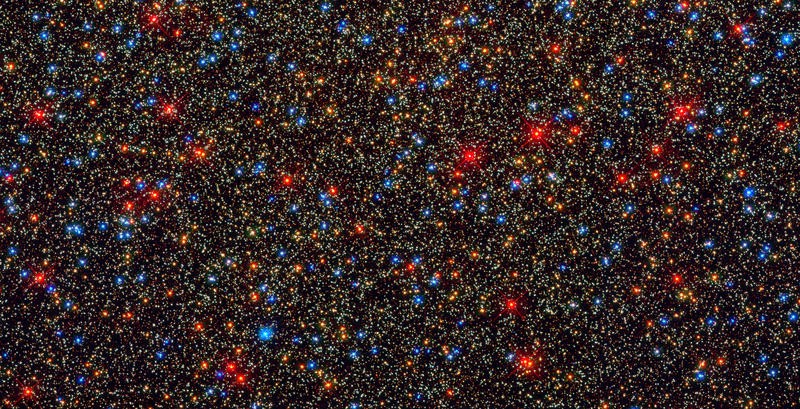

17. This doesn’t look like much, but it’s the best photo we have of Pluto to date. It shows an icy, mottled, dark molasses-colored world undergoing seasonal surface-color and brightness changes–evidence that it isn’t just a distant icy rock (because it does indeed have seasons). We’ll find out far more when New Horizons arrives at the planet in July 2015:
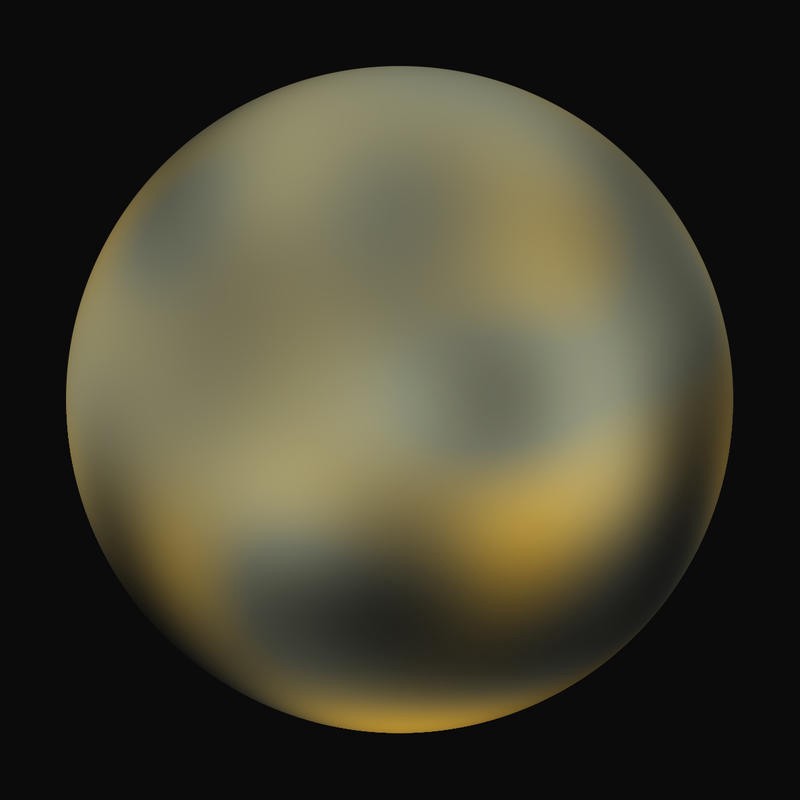

18. The light-year-long dust pillars of the Carina Nebula are formed as radiation from vast stars carves away cold molecular clouds. This shot is a composite of hydrogen and oxygen light, so you wouldn’t see it like this if you were standing nearby:
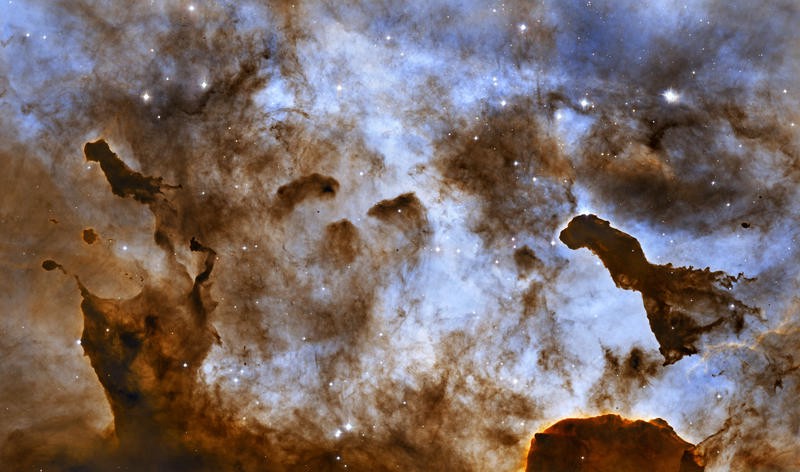

19. The Whirlpool is a classic example of a spiral galaxy, complete with curving arms, pink star-forming areas, and blue star clusters. The narrow lanes of dust revealed by Hubble give the Whirlpool Galaxy its name–as if they are swirling toward the galaxy’s core:
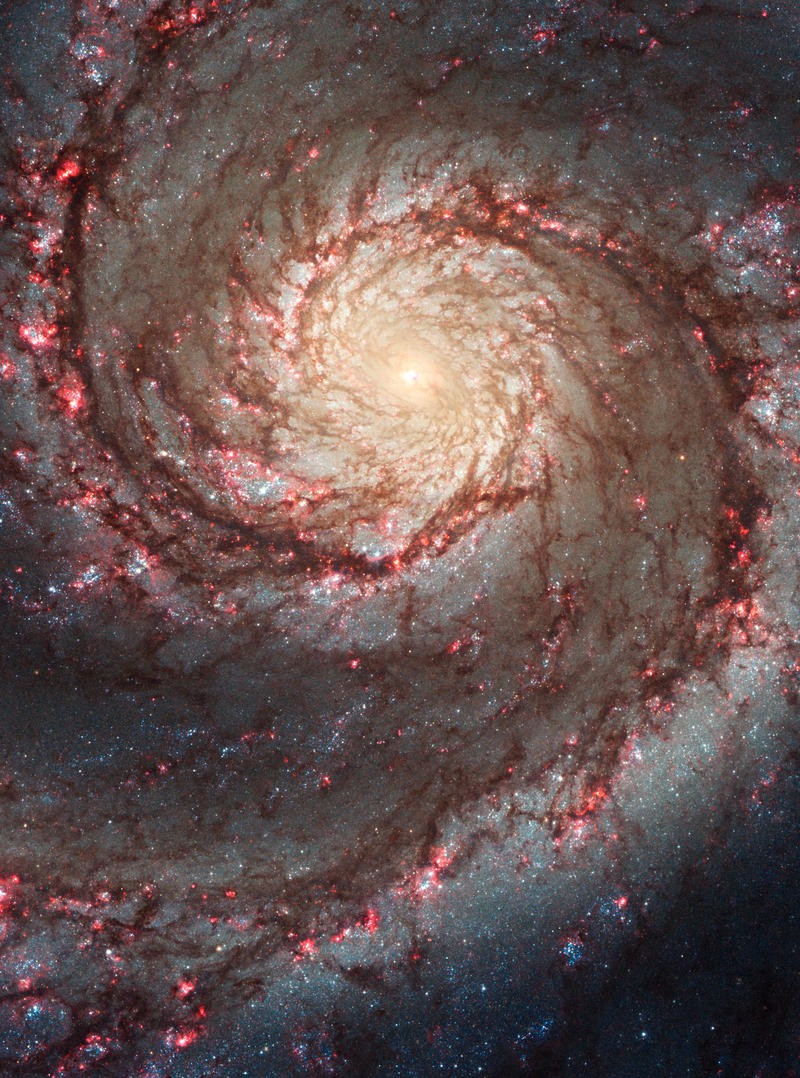

20. One hundred fifty Hubble orbits went into producing this extraordinarily detailed look at the Orion Nebula. This star-formation zone includes more than 3,000 stars of different sizes, many of which had never been imaged previously. The mosaic that produced this picture contains more than one billion pixels:
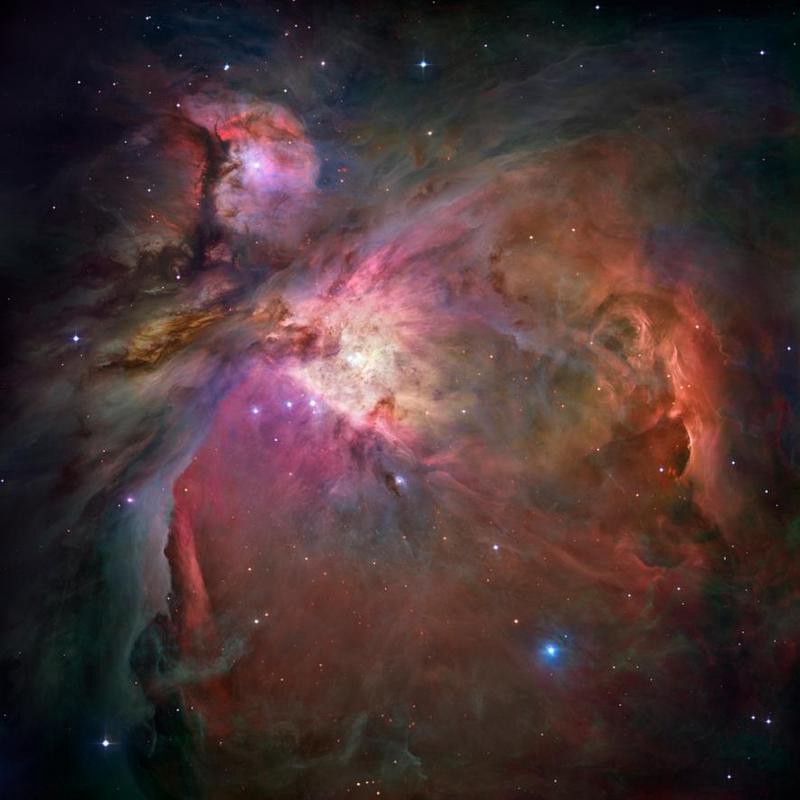

21. NASA says that the Cat’s Eye Nebula looks like “the penetrating eye of the disembodied sorcerer Sauron.” We think it’s just plain beautiful. It shows 11 or so concentric bubbles around a central star-forming region, which ejected its mass in a series of pulses at 1,500-year intervals. The dust shells each contain as much mass as all of the solar system’s planets combined:
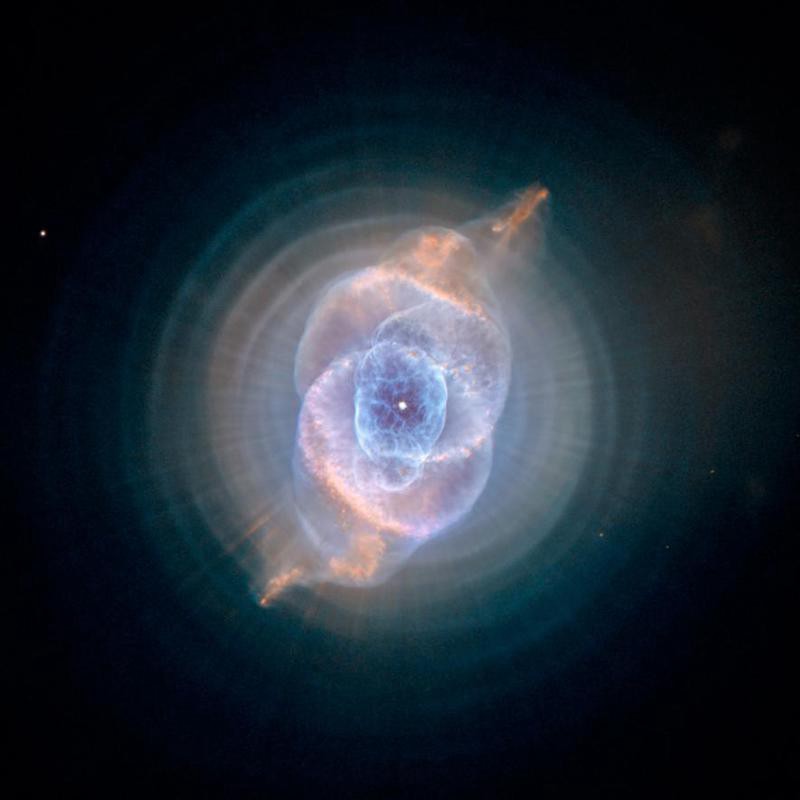

22. These three images show the ring system around Uranus as its axis tilts toward Earth. In the last, you’re seeing them exactly edge-on–something which happens only once every 42 years. We know surprisingly little about Uranus; the only close observations we have are from a Voyager 2 flyby in January 1986. These photos, however, confirm that the rings have changed significantly since that time:
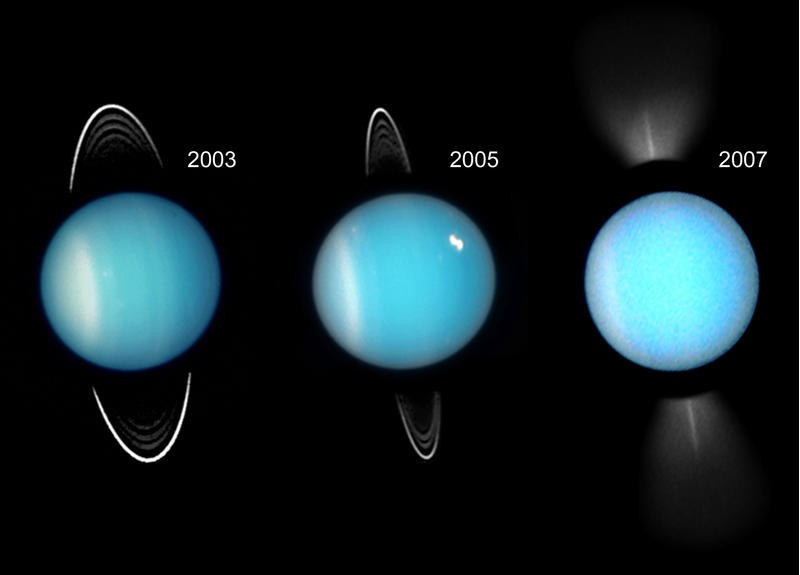

23. A combination of observations from Hubble and the Atacama Large Millimeter/submillimeter Array yielded this image of a trio of primitive galaxies in a blob of primordial gas from the very dawn of the universe. They’re almost 13 billion light years from Earth, meaning that we’re seeing an image from when the universe was just 800 million years old. Eventually, we may see them merge into a single galaxy:
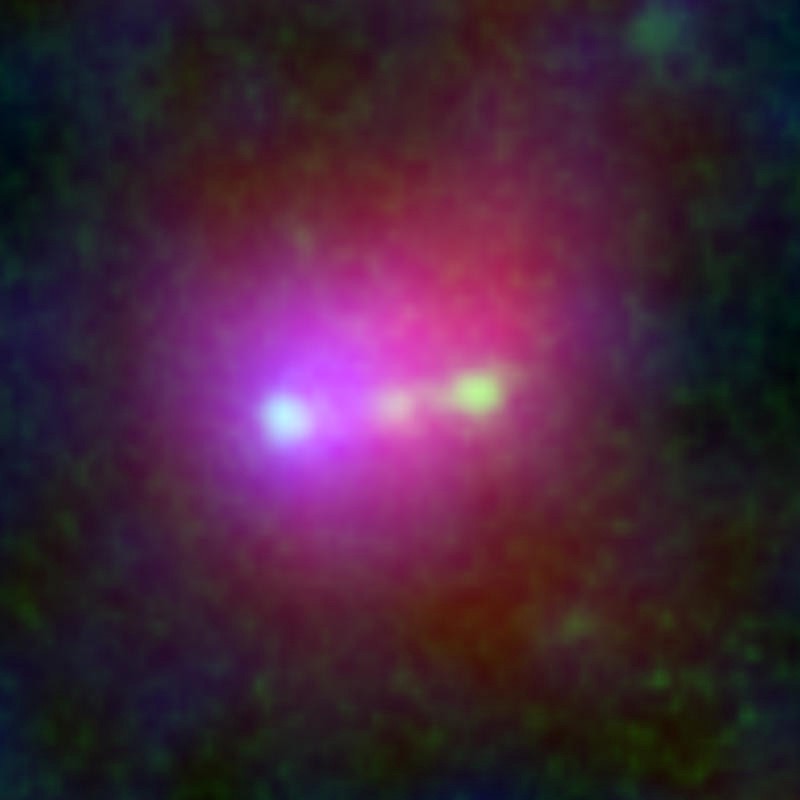

24. This sphere of gas is the remnants of a supernova–a vast stellar explosion. Its color draws from the gas’s shock in response to the explosion’s blast wave, with ripples caused by either subtle variations in the density of the ambient interstellar gas, or possibly driven from the interior by pieces of the ejecta. The sphere itself is 23 light years across and expanding at more than 11 million miles per hour:
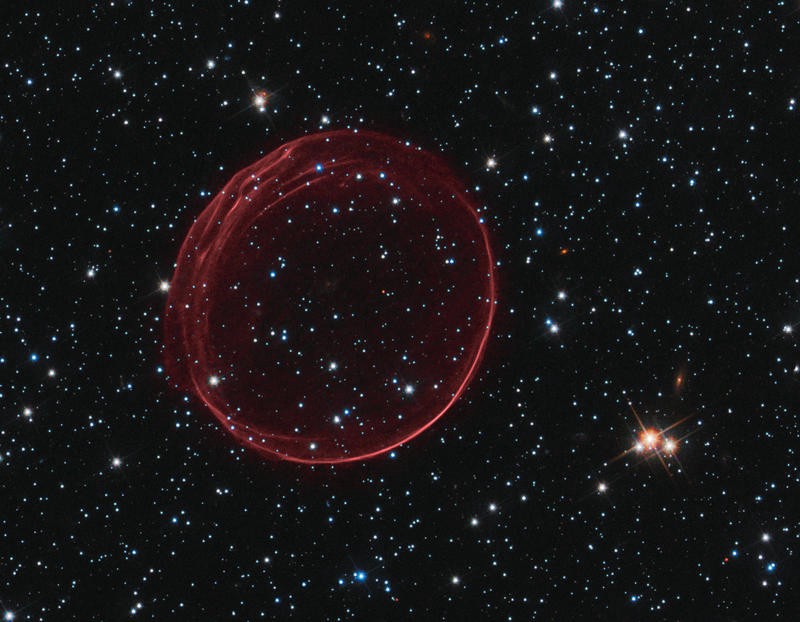

25. These galaxies are the oldest objects you’ll ever see. This image was assembled from 10 years of Hubble data of a patch of sky in the Fornax constellation. By collecting faint light over many hours of observation, it revealed thousands of galaxies, both nearby and very distant, making it the deepest image of the universe ever taken–with the youngest galaxy formed fewer than half a billion years after the Big Bang some 13.7 billion years past:



How We Get To Next was a magazine that explored the future of science, technology, and culture from 2014 to 2019. This article is part of our Above & Beyond section, which looks at our understanding of the universe beyond Earth. Click the logo to read more.
